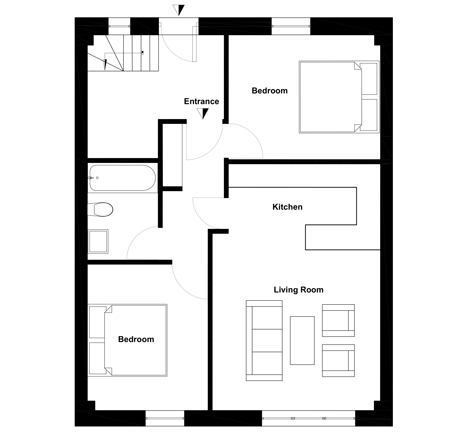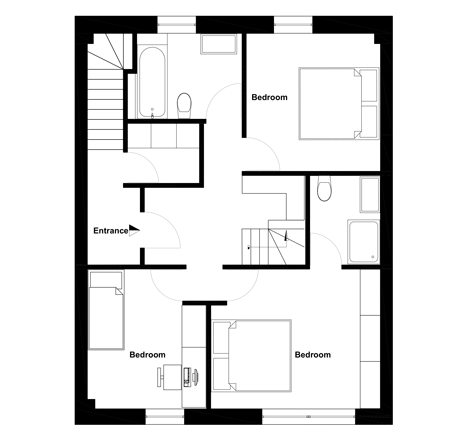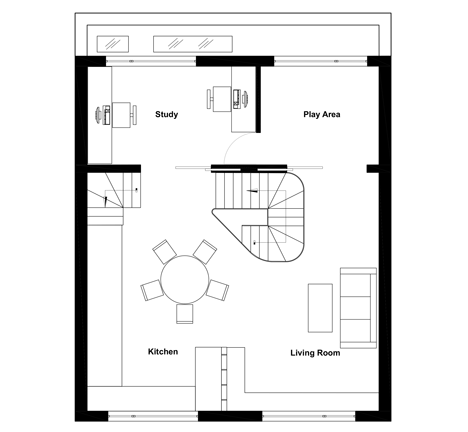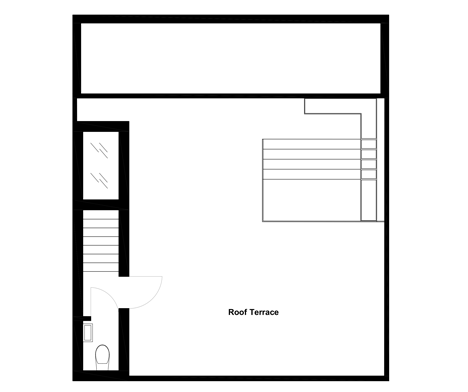Scenario Architecture lowers a ceiling to create a sunken roof terrace for a London home
By lowering the ceiling of this London home, Scenario Architecture has created a view between the living room and the roof terrace, allowing parents to keep an eye on their children when they play outside (+ slideshow).
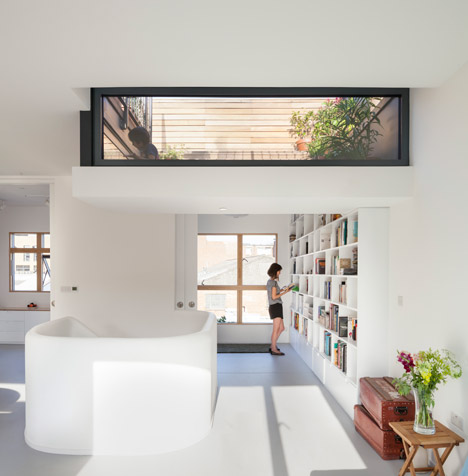
North London-based Scenario extended and remodelled the terrace house in Hackney for a young family, who wanted a view from the living space to the garden.
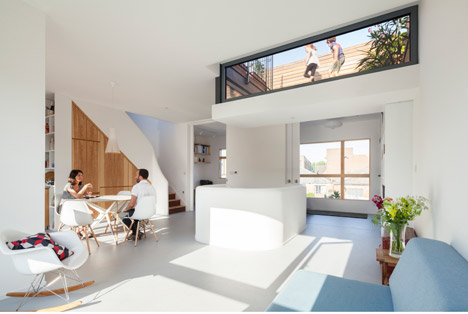
"This is something they enjoyed in their previous home, but it seemed impossible to recreate here, given it's a terrace house with outdoor space on the roof," lead designer Ran Ankory told Dezeen.
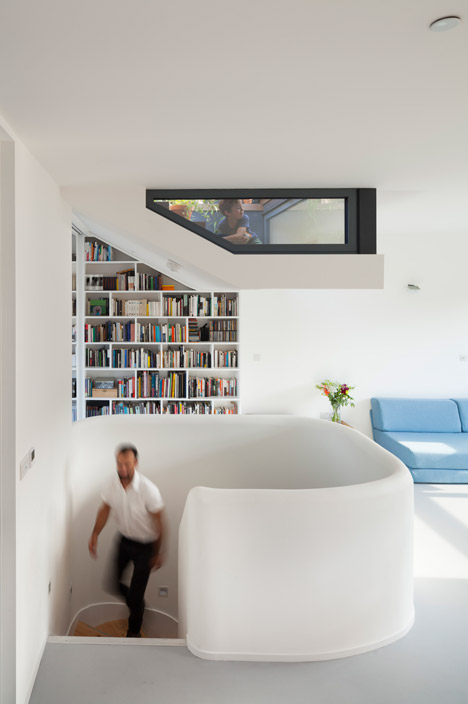
"Instead, we decided to pull a segment of the roof terrace down into the living space to create a relationship between the two," he continued.
"Another welcome side effect was that it created a view of the sky from inside, and also brought more light into the living space, and to the floor below via the stairwell."
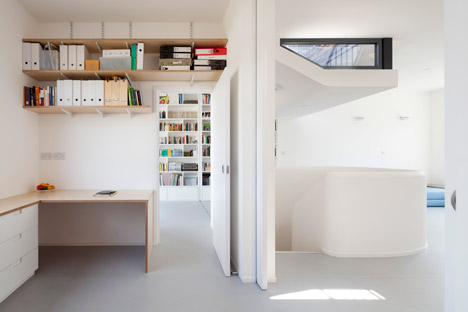
Other homes that create outdoor space within constricted vertical layouts include a Tokyo house with an L-shaped roof terrace at the back and a London house with a roof-top courtyard enclosed by translucent glass panels.
Scenario's project involved the complete reconfiguration and extension of the home, which was bought by the owners as a two-storey open-plan property, with a double-height ground floor and a mezzanine covering half of the first floor.
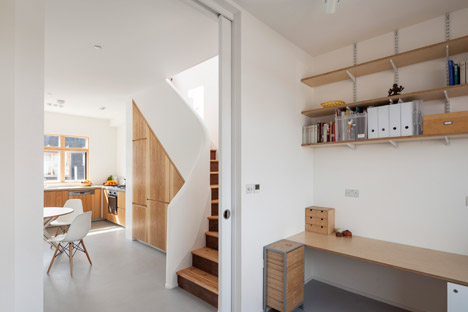
The work has turned it into a three-storey home, increasing the floor space from 103 square metres to 252 square metres.
A ceiling was added between the ground floor and first floor, and the roof was raised to create enough space for a third floor at the top, with a terrace above.
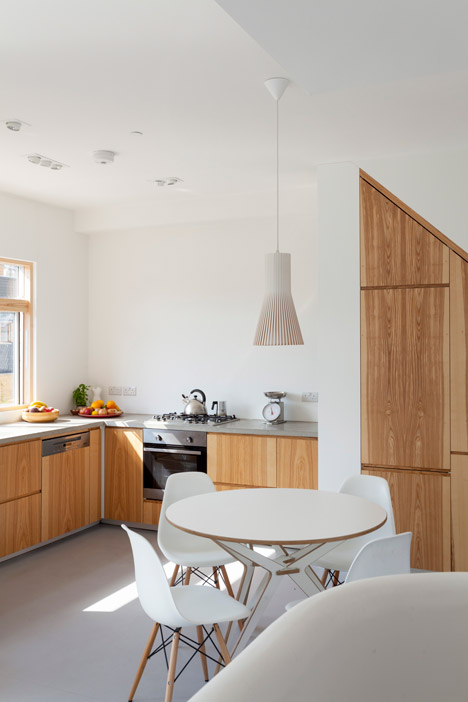
The ground floor now has a two-bedroom flat, which the owners rent out, and the first floor has three bedrooms and a bathroom for the family. On the new level at the top, there is a kitchen, living and dining area, and a study.
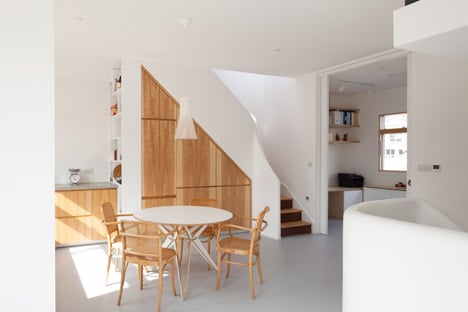
The top floor was designed as a flexible live-work space with a study and playroom next to the living room, which can be screened off with full-height sliding doors.
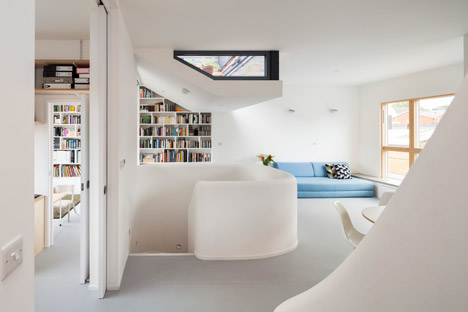
"One of the owners works in the arts and can have rehearsals in the open-plan space, or hold quiet meetings in the study with the doors shut," said Ankory.
"Most of the time, the space is left open, with the central staircase acting as a subtle separation between the areas around it."
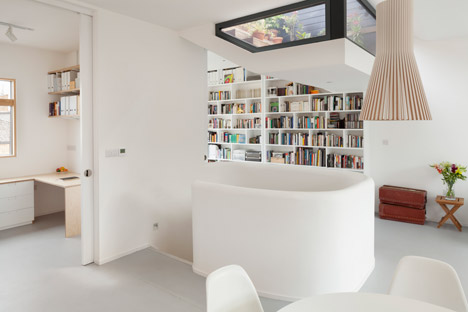
Large pine-framed windows were added to the first and second floors to bring in more light.
Birch plywood cabinets in the kitchen were finished with an olive-ash veneer, and vinyl was chosen for the flooring in the living space to provide a smooth finish and muted colour, similar to concrete.
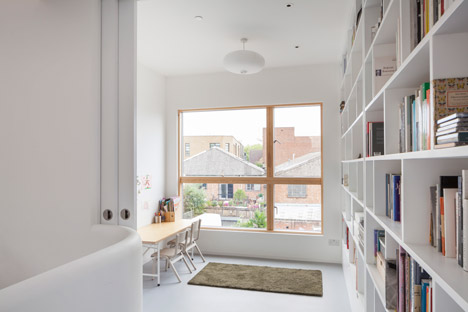
"The owners liked the idea of a polished concrete floor, but the weight would have been too much for the timber and steel structure, so they chose a high-quality vinyl floor instead," said Ankory.
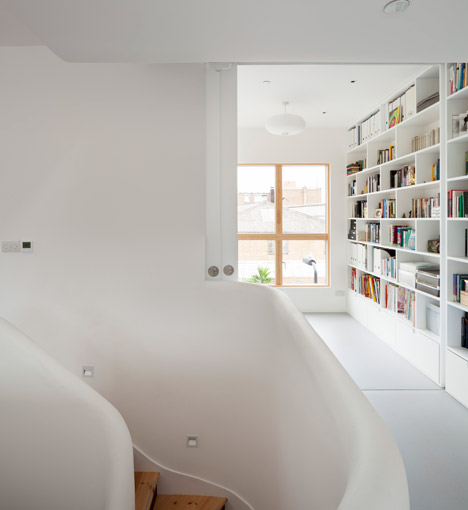
Storage has been added wherever possible in the remodelled home, including beneath the stairs in the living space and under a new seating ledge by the window.
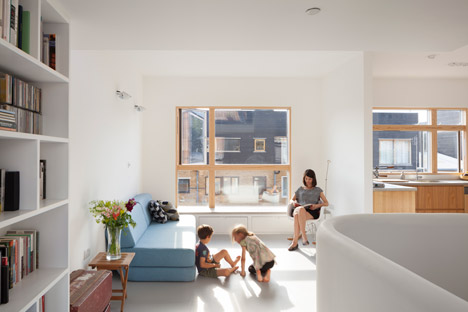
"As a scheme begins to emerge, there are always walls and floors that can stretch further to facilitate seating, as well as leftover spaces that can be used for storage," said Ankory.
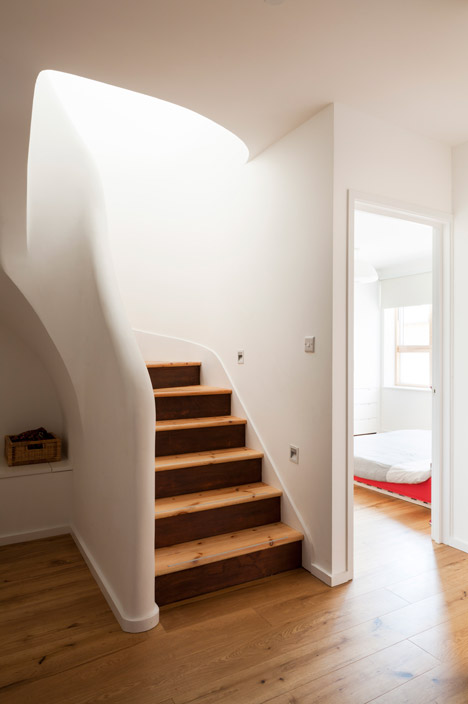
Sinuous curved balustrades were designed for the stairs connecting all areas, made from timber clad with plasterboard.
Related content: see more residential extensions
"To create this fluid form for the stairs, we used Building Information Modelling software," explained Ankory. "It enables an easy and accurate translation of 3D models to 2D production information that the builders can use on-site."
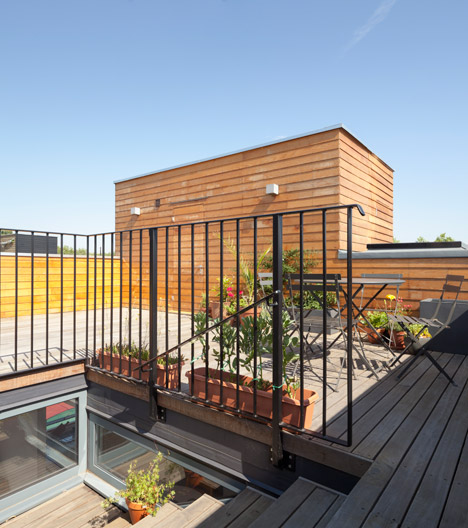
On the roof, the architects added a box-shaped extension clad in western red cedar, which matches the size and materials of the roof extensions to adjacent properties. It houses a toilet and stairs up from the living space.
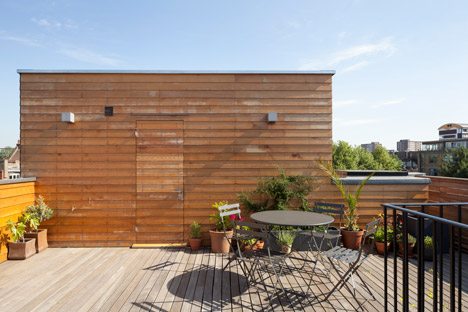
The stepped section of the roof terrace, which dips down into the living room below, offers a more private space to escape the gaze of neighbours.
"As there are similar roof terraces on either side of the house, the sunken section creates a hidden area, and also provides a sunny spot with a visual relationship to the home's interior," said Ankory.
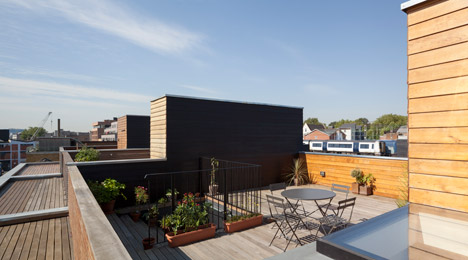
Drainage was incorporated into the steps to avoid rainwater getting trapped in the sunken section of the roof terrace. The steps are angled slightly to channel water towards the home's main drainpipes.
Photography is by Matt Clayton.
